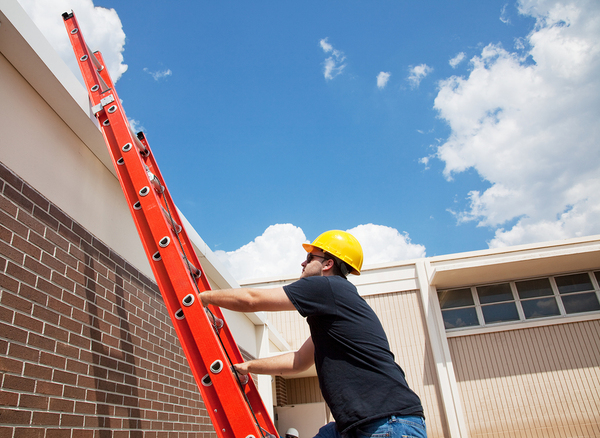
Property condition assessments include inspection of the roof.
A property condition assessment, also called a property condition report, is, like a home inspection, often required by a lender before a sale can go through. Also like a home inspection, there are no hard and fast rules governing what is and is not included in a property condition assessment.
Commercial inspectors, engineering firms, and consulting firms may each have their own method of conducting this type of inspection. Generally speaking, however, it is considered less in-depth than a full commercial building inspection.
Your starting point should always be your client. Have a baseline regarding what you generally provide, but beyond this, find out what your client expects from your inspection so they won’t be disappointed.
Some commercial inspectors use the ASTM E-2018 as a basis for their evaluation, but there are no legal requirements for what is and is not included in a property condition assessment.
What’s Included in a Property Condition Assessment?
At a minimum, a property condition assessment entails walking the property and making notes of the condition of the structures, systems, land and any improvements that have been done or might be necessary. Any records you can gain access to, such as receipts for work or equipment that has been installed, will help you more accurately predict the lifespan of some systems and the cost of replacement based on how long the improvements are expected to last.
Some lenders want a detailed report outlining what types of expenses are expected throughout the life of the loan. So if the buyer has a 20-year loan, you might need to list maintenance costs like replacing the roof and repaving the parking lot, even if these have recently been done.
In the short term, however, you may just need to note the condition of the roof and how long you expect it to last, and ditto for the parking lot, exterior façade and any landscaping issues like leaning trees or potential for flooding. Other critical outdoor considerations are evaluating HVAC units (are they old or lacking in any way?) and taking a close look at the stormwater drainage system. Water pooling around the building or even on the parking lot creates the potential for expensive problems.
Interior Inspection for a Property Condition Assessment
Inspecting the interior of the property is similar to a home inspection. Walls, floors, and ceilings are checked for structural issues or damage from water, pests, age or other potential problems like rusting or tripping hazards.
What is often not included in a property condition assessment that you might find in a home inspection are some details that might be considered cosmetic, such as the condition of carpeting or paint or small appliances.

Property condition assessments usually include parking lots, garages and other outdoor structures and facilities.
Mold is also an important consideration and should be looked for both inside and outside. Not only can the presence of mold spores be harmful in and of themselves, but they can indicate the existence of a leak or moisture problem that would require rectifying.
Another difference between a property condition assessment and a home inspection is that estimates of the cost of improvements and/or replacements are generally included in the report. Researching these costs can take hours of extra time, so be sure to consider this when setting your fees for this service.
Performing property condition assessments is easy when you get your inspection training from ICA School. Add this service to your list of offerings to grow your business — and your profits.
The post What Is a Property Condition Assessment? appeared first on Home Inspection Training & Certification Online.
